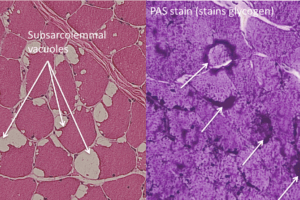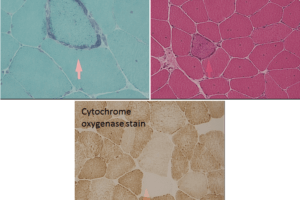Brief review of the clinical pharmacology of acetylcholine, acetylcholinesterase and the ach receptor.
Nicotinic Receptor Antagonists
Antagonists of the nicotinic Ach receptor suppress muscle activity. Clinically this is seen in many situations: curare (and other agents like pancuronium) produces a “non-depolarizing” muscle block by antagonizing the nAchR at the NMJ.
Increasing the Ach concentrations at the NMJ can reverse these effects, so acetylcholinesterase inhibitors (like neostigmine or edrophonium) can be used to reverse muscle block in myasthenia gravis and curare poisoning (although it will not necessarily be a complete or long-lasting reversal).
Nicotinic Receptor Agonists
Agonists that activate nAchR can paradoxically block muscular activity – prolonged activation (for example in the presence of constant succinylcholine, which cannot be hydrolyzed by acetylcholinesterase) depolarizes the muscle, pushing Na channels to inactivation. The muscle can no longer contract despite open nAchR at the NMJ because the Na+ channels will not pass current to depolarize the muscle past threshold. This is known as “depolarizing block” and succinylcholine is often used as a muscle relaxant to allow intubation.
Muscarinic Receptor Antagonists
Muscarinic antagonists block many parasympathetic functions. For example, atropine (a musc. antagonist) blocks action at the pupillary sphincter, causing dilation. Recall that the light reflex acts through the Edinger-Westphal nucleus which sends parasympathetic preganglionic fibers to the ciliary gaglion (so nicotinic Ach receptors in the ganglion), and the ciliary ganglion sends fibers to the pupillary sphincter (so muscarinic Ach receptors). Topical atropine blocks the musc Ach receptor at the sphincter, preventing parasympathetic input from constricting the input, so the pupil dilates. The same mechanism is found at other end organs, for example atropine also affects cardiac function, blocking the bradycardia and vasodilation that the paraysmpathetic system induces; this results in tachycardia and elevated blood pressure.
Muscarinic Receptor Agonists
Muscarinic agonists can have the opposite effect. See Glaucoma discussion below.
Acetylcholinesterase Inhibitors
Acetylcholinesterase inhibitors slow the degradation of Ach at the synapse and therefore increase the concentration (by increasing half-life) of Ach in the synapse. Short and medium duration acting inhibitors are useful clinically. Edrophonium is short acting and is sometimes used to confirm a diagnosis of myasthenia gravis.



